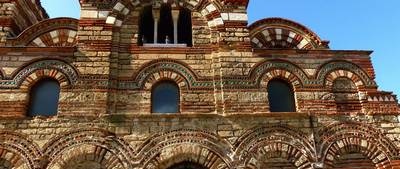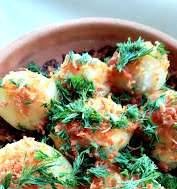|
 St. Louis Cathedral is the most valuable Catholic monastery in Bulgaria. The temple was built in the nineteenth century. The facade of the religious object will meet with chic columns and graceful statues. The interior of the cathedral looks more restrained. There are few assorted decorations. The building houses the majestic sarcophagus of Mary Louise of Bourbon-Parma. The princess was the wife of the Bulgarian king Ferdinand I. The people considered her the patroness of Plovdiv. Now the memory of the heroine is alive. St. Louis Cathedral is the most valuable Catholic monastery in Bulgaria. The temple was built in the nineteenth century. The facade of the religious object will meet with chic columns and graceful statues. The interior of the cathedral looks more restrained. There are few assorted decorations. The building houses the majestic sarcophagus of Mary Louise of Bourbon-Parma. The princess was the wife of the Bulgarian king Ferdinand I. The people considered her the patroness of Plovdiv. Now the memory of the heroine is alive.
The Church of the Most Holy Theotokos is considered a vivid symbol of the country's rebelliousness to the Ottoman soldiers. Part of the temple is a three-story bell tower with marvelous carvings. There is an inscription about respect for the memory of the liberators. The lines are dedicated to the Russian soldiers who recaptured the city from the Turkish troops in 1878. Parishioners often admire the frescoes in the church. The images of the archangels, Christ are not forgotten. And earthly people. For example, the peasants enslaved by the Turks. Or the leaders of the liberation movement.
The Jumaya Mosque is the fundamental Muslim temple in Plovdiv. They built a masterpiece of architecture in the city center. It happened immediately after 1364. Then Plovdiv was captured by the troops of the Ottoman Empire. The quadrangular shrine is striking in its monumentality. It has a sweeping hall. The height there is almost thirty meters. The mosque has nine domes, which are skillfully covered with lead plates. The interior of the building will be remembered for the elegance of the murals. Images of branches, flowers will not be forgotten. Admire quotes from the Koran. A stately minaret rises in the building.
The ancient theater delights tourists with its luxury and antiquity. Its diameter is eighty two meters. The majestic structure was erected in the second century. The building was used for various performances and important public gatherings. In the theater, menacing marble seats are frozen. Ancient places for honorary persons have been preserved. On the seats you can see names, for example, of persons close to the emperor. In the fourth century, the building suffered from fires and violent earthquakes. Today, they continue to stage performances and organize concerts there. At the same time, they use the amazing acoustics of the architectural "unique".
There are hundreds of masterpieces of architects in Plovdiv. The Roman aqueduct is among them. The time of the creation of such structures is the seventh fierce century BC. Their function is to provide a systematic supply of water to cities. Now the "giants" are inactive. But they are valuable fragments of bygone eras.
The antique stadium "Philippopolis", built in the second century, amazes with its sophistication. Once upon a time, gladiator fights and sports were organized there. In ancient times, the stadium accommodated thirty thousand fans of bloody spectacles. There are many pavilions in the square near the stadium. Their owners offer souvenirs to customers. From paintings to sculptures.
Plovdiv will not disappoint connoisseurs of entertainment establishments either. For example, there is a Cherlivo club in the city, which has earned a good reputation. In the bar you can dance, enjoy live music, relax. There is a huge assortment of spirits.
 Specialists from Bulgarian companies advise clients on Bulgarian wines. Tourists are taught the correct use of the drink. They tell you how to choose and store it. Events with tasting of the noble "nectar" are held. Arrange excursions to vineyards. Specialists from Bulgarian companies advise clients on Bulgarian wines. Tourists are taught the correct use of the drink. They tell you how to choose and store it. Events with tasting of the noble "nectar" are held. Arrange excursions to vineyards.
The sweeping plant of this wine-making company froze near Plovdiv - in Sliven. Tourists are attracted by the local cellar. The guide will tell the guests about the history of winemaking in Bulgaria. Of course, the program will not do without alcohol tasting.
The Regional Ethnographic Museum is famous among the guests of the city.There are thousands of exhibits in the building. The museum will give a complete picture of the life, art of the Bulgarians who lived in the eighteenth and nineteenth centuries. National costumes are flaunting. Ancient dishes lurked. Weapons attract attention. Traditional musical instruments are silent. The exhibits are displayed in an old mansion owned by an influential merchant. The masterpieces of venerable Bulgarian artists are remembered. The collection of black and white photographs taken by local citizens is fascinating.
The Regional History Museum attracts tourists. Its exhibits are housed in several buildings. Guides will help you get an idea of the history of Bulgaria from different times. For example, about the period of the struggle for independence from the Ottoman Empire. There is a department related to modern history - until the middle of the twentieth century. A special exposition is devoted to the printing of the country. Vacationers will be amazed by geographical maps, thousands of volumes of various texts.
Asenov Fortress is an old building that slumbers in the beauty of the Rhodope Mountains near Plovdiv. The impregnable fort is strategically located. It was used to control the route from Plovdiv to the sweeping Aegean Sea. The gloomy citadel is considered one of the most valuable sights in Bulgaria. In 1991 the fortress was restored. Local guides will help visitors discover the secrets of the formidable building.
The Devil's Throat is a mysterious cave frozen in a canyon. It used to be dangerous and impassable. Now there is an artificial tunnel leading to a huge underground hall. Dozens of bats flap their wings. In the mystical kingdom, a forty-meter waterfall is rustling.
Borisov N.
|
 St. Louis Cathedral is the most valuable Catholic monastery in Bulgaria. The temple was built in the nineteenth century. The facade of the religious object will meet with chic columns and graceful statues. The interior of the cathedral looks more restrained. There are few assorted decorations. The building houses the majestic sarcophagus of Mary Louise of Bourbon-Parma. The princess was the wife of the Bulgarian king Ferdinand I. The people considered her the patroness of Plovdiv. Now the memory of the heroine is alive.
St. Louis Cathedral is the most valuable Catholic monastery in Bulgaria. The temple was built in the nineteenth century. The facade of the religious object will meet with chic columns and graceful statues. The interior of the cathedral looks more restrained. There are few assorted decorations. The building houses the majestic sarcophagus of Mary Louise of Bourbon-Parma. The princess was the wife of the Bulgarian king Ferdinand I. The people considered her the patroness of Plovdiv. Now the memory of the heroine is alive.






